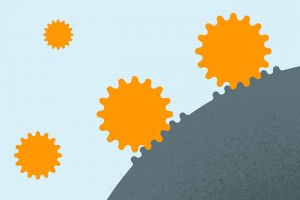



Nanoparticles (particles about one billionth of a meter in width), are described as “the nexus between biology and engineering”. They work by coupling “magnetic material with antibodies or proteins that can attach to and detect other molecules inside the body”, says Google[x] head of life sciences Andrew Conrad. Conrad described a wearable device, which after applied to the patient's skin, would program the said particles to spread throughout different parts of the body. After attaching to different cellular structures in the body (such as proteins, cells, and molecules), the device “calls” the particles to count and compile information regarding the person's medical condition.



 Laptop & Tablet Parts
Laptop & Tablet Parts




















